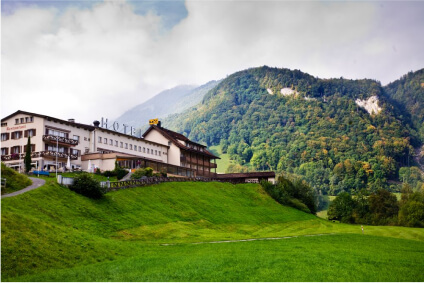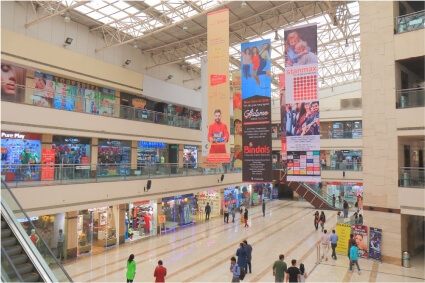Tourist Places and Sightseeing in Vaishno Devi, Katra

Situated 6 km away from the holy temple of Vaishno Devi, the Ardhkuwari cave resembles a mother’s womb in shape and is therefore famously called Garbajoon Cave. It is a locally held belief that in Ardhkuwari, Mata Vaishno Devi took the form of Maha Kali after meditating here for nine months before making Vaishno Devi Bhawan her eternal abode. One can only reach the innermost region of the cave by crawling on the knees. Once there, you will find an altar dedicated to Mahakali, Mahalakshmi, and Mahasaraswati.

Legend has it that during his last breath to repent his sins, Bhairav Nath begged for Maa’s forgiveness. Mata forgave him and proclaimed a visit to his temple mandatory for her devotees. Today he is revered as Lord Bhairon and is considered the invincible guardian to Vaishno Devi Shrine. His temple lies at a higher elevation than the temple of Goddess and is located 5 km away from it.
The climb to this holy site is treacherous, but the picturesque views of the forest-fed mountain make it worthwhile. If the journey feels too challenging, one can use pony service. A ropeway service is also available to ferry devotees from Vaishno Devi to Bhairavnath Temple.

It is said that he was an ardent devotee of Vaishno Devi and would frequent her shrine regularly. Pleased by this, Mata had blessed him. Today, his shrine symbolizes religious harmony as it is thronged by both Hindus and Sikhs, especially during the three days of Baisakhi Mela.
The Gurudwara has splendid architecture, and its interiors shine in the textures of golden shade. It houses ashes, weapons, and other relics of the great Baba Banda.

To quench his thirst, she shot an arrow in the ground, and a spring sprang up, which is famous as Ban Ganga today. Since Ban means arrow, hence the name Ban Ganga. It is also called Bal Ganga (Bal meaning hair) after another legend, according to which the Goddess washed her hair here.
Such is the sanctity of the river; it is also known as the twin of Gang. It is considered necessary that devotees take a dip in its waters before continuing their pilgrimage to Mata’s abode.

Baba Dhansar was the son of Vasudev, the human incarnation of Lord Shiva’s serpent. According to the legend, Baba Dhansar’s worship of Lord Shiva helped the village of Karua get rid of a demon who was terrorizing them. After this event, the temple was built at the site.
Near the temple, a huge spring emerges from the rocks in a thick grove of trees and forms a cluster of small waterfalls cascading into a holy rivulet, which merges with the river Chenab.
Close to this rivulet is a naturally formed Shivling on top of which milky water droplets constantly fall all year round—devotees in a considerable number gathered here on the eve of Shivratri.

Maharaja Gulab Singh initiated the construction of this marvelous temple. Later, his son, Maharaja Ranbir Singh, took charge of its completion. The temple takes pride in being the largest shrine complex in North India.
The complex consists of seven temples, each consisting of its own Shikhara (lofty spires). The royal temple has many gods and goddesses enshrined, but the presiding deity is Lord Ram. As such, the central temple is dedicated to him.
The temple is an architectural wonder built by combining two great architectural styles. Gold sheets wrap the inner walls of this main temple on three sides. While the carvings and arches being exceptionally resplendent show the influence of Mughal style, the towers or Shikharas offer a glimpse of Sikh architecture.
The grand temple interiors house images of almost all Hindu gods and goddesses and contains a gallery where phallic forms of lord Shiva (lingams) are placed. The temple pays tribute to its founder Maharaja Ranbir Singh, whose portrait corresponds with Lord Hanuman's photo at the entrance.
Inside the shrine complex is a library accommodating rare Sanskrit books and manuscripts. Flocks of tourists and believers visit the temple regularly magnetized by its splendor and spirituality.












